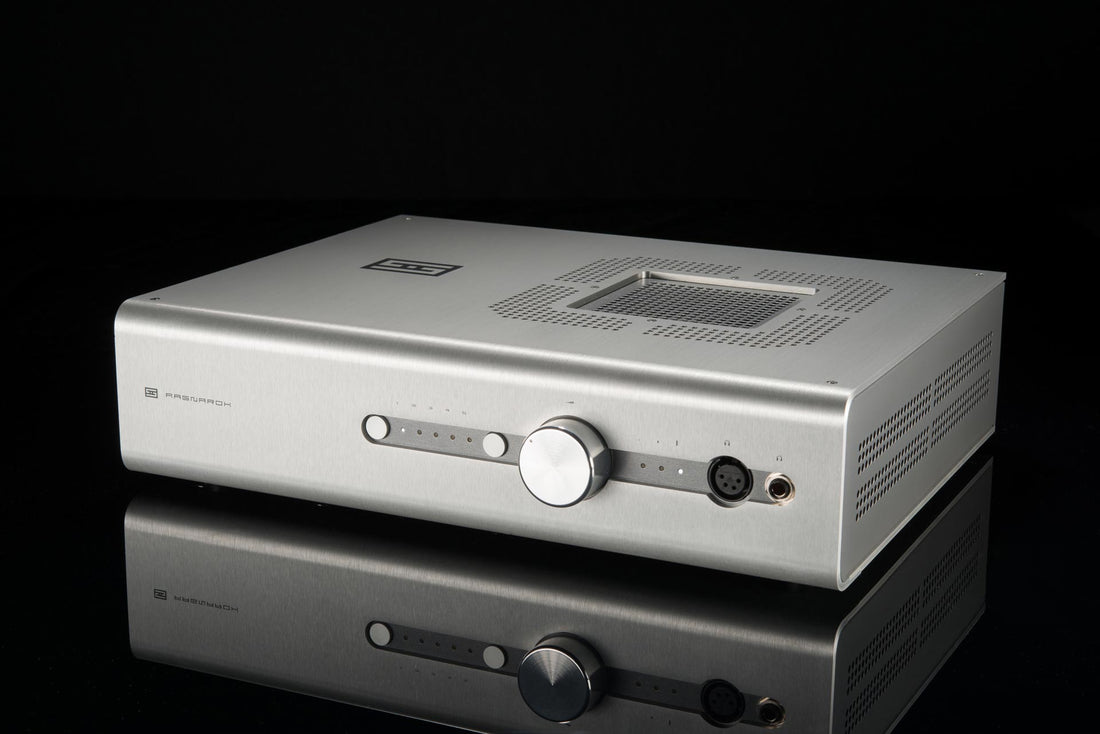Schiit Reimagines the Company Store (Seriously)
[Schiit is a love-it-or-hate-it force in the audio world. Mike Moffat and Jason Stoddard have been around the audio world for a good long while (especially Mike, who’s older than dirt), and in addition to their innovative approaches to digital design, sales, and manufacturing, have become famous/infamous/notorious for their irreverence and somewhat-juvenile sense of humor. God bless ’em, says I; the world has too many boring brands run by stuck-up suits.—Ed.]
4/1/2017, Newhall, CA. Schiit announced the opening of the “Schiitr,” its first retail store, today. The Schiitr allows customers to listen to the vast majority of Schiit’s product line in separate, dedicated headphone and speaker rooms. It also provides a comfortable place to sit back, relax, and enjoy some coffee or tea, which are complimentary.
“We’ve been having customers ask us for factory pick-up or a dedicated demo room for some time,” said Jason Stoddard, Schiit’s co-founder. “Our factory isn’t the ideal place for that, so we decided to go one better, and create an environment where people might want to simply hang out.”
The Schiitr provides two dedicated listening areas:
- Speaker: features Schiit’s Ragnarok and Yggdrasil, as well as Saga, Freya, and Vidar (prototype), with a small selection of speakers (currently KEF and Salk).
- Desktop: features the full line of Schiit’s headphone-related products, from Fulla 2 to Mjolnir 2/Gungnir Multibit, together with a broad selection of headphones.
The Schiitr also provides complimentary organic coffee and tea, together with a small lounge area where customers can also listen to the smaller Schiit products, such as Fulla 2.
“This isn’t a dealer, though,” said Jason. “We’re only selling Schiit products. We can’t guarantee we’ll have every hot headphone and speaker on the planet. It’s best to bring your own headphones, and try them on a wide variety of gear to see what you like.”
The Schiitr is also envisioned as a place where Schiit can hold seminars, have informal “tech nights” to explore different system combos, and to host Schiit’s annual SchiitShow.
The Schiitr employs no salespeople; all staff are Schiit employees, and are specifically instructed not to “sell” potential customers.
Located in Old Town Newhall, across the street from a Metrorail station, the Schiitr is in a rapidly-developing area with good food, wine, beer, and theater only a short walk away.
The Schiitr is open now, and will be open from 10-6, Tuesday through Saturday.
About Schiit Audio: Founded in June 2010 by Jason Stoddard and Mike Moffat, Schiit has grown into a leader in affordable high-end audio, with a wide range of products spanning DACs, headphone amplifiers, and preamplifiers, from $49 to $2299.
####
News and Notes on 2016 RIAA Shipment and Revenue Statistics
[The RIAA—Recording Industry Association of America— is best-known to audiophiles as the group that devised the standard equalization curve for modern phono playback. Beyond that, their focus has been protection of IP and artists’ rights, occasionally in ways that have rubbed individual users the wrong way. Back in the ’80’s, the Home Recording Rights Coalition fought the RIAA for the rights of private individuals to make single copies of recorded media for private use. These days, the RIAA is the storehouse of statistics on sales of recorded music. The press-release on this subject was just a brief snippet; the full report, found here, is very interesting reading.—Ed.]
Estimated retail revenues from recorded music in the United States grew 11.4% in 2016 to $7.7 billion. The primary driver of that growth was a doubling of paid streaming music subscriptions which helped the American music business experience its biggest gain since 1998. At wholesale values, the industry was up 9.3% to $5.3 billion. Although our 2016 revenue report catalogues substantial overall improvement for the industry, revenues are still only about half what they were in 1999, and revenues from more traditional unit-based sales (physical products and digital downloads) continued to decline significantly.
####



